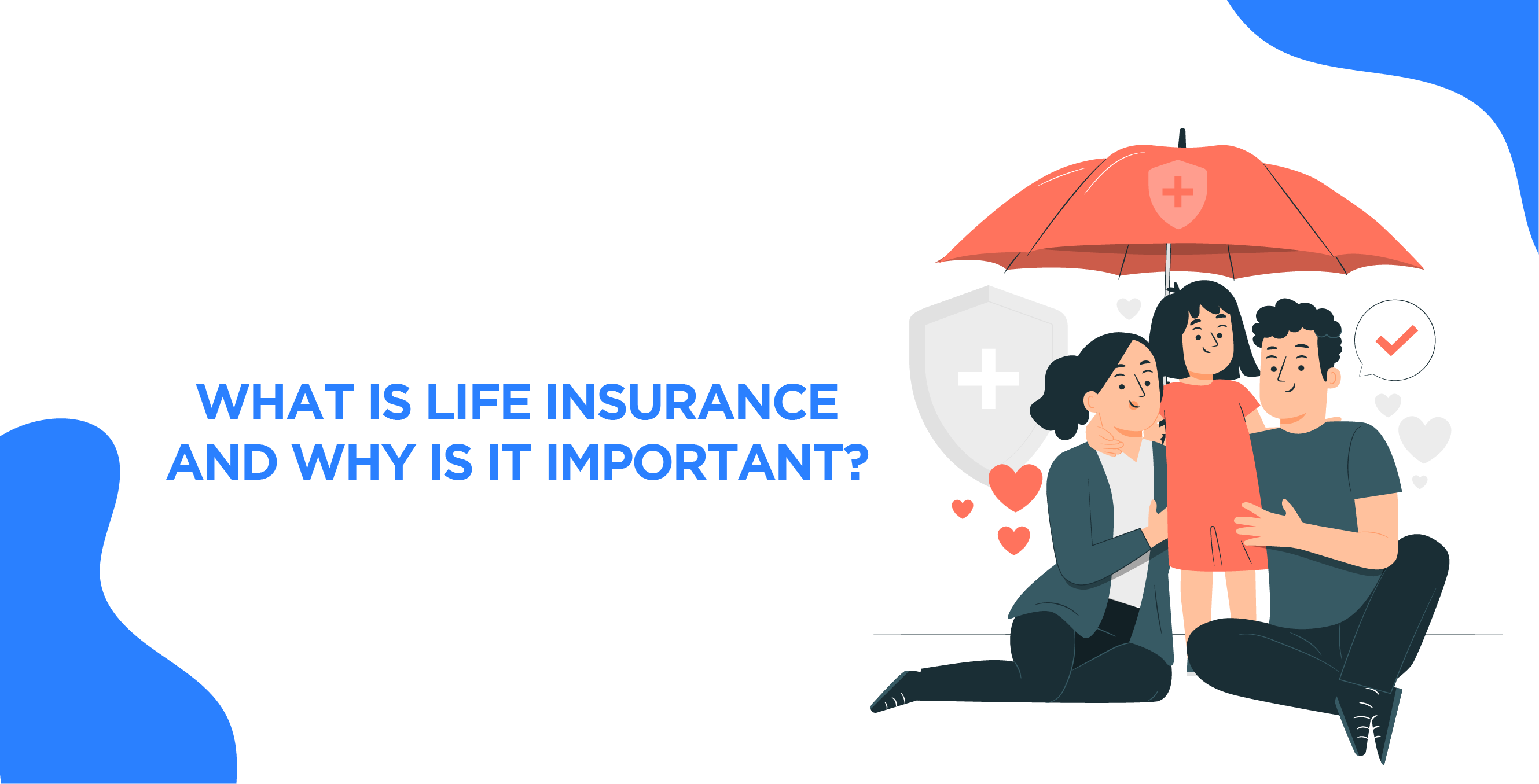
Author
LoansJagat Team
Read Time
5 Min
12 May 2025
What Is Life Insurance and Why Is It Important?
Faraz is a 25-year-old shop assistant earning ₹20,000 monthly in Pune. His parents, both in their 50s, and his 16-year-old sister rely on his income. Their tiny apartment costs ₹8,000 in rent, while groceries take ₹5,000. His sister's school fees are ₹3,000, electricity and water bills come to ₹2,000, and he tries saving ₹2,000.
But nights are uneasy - what if his scooter accident last month had been worse? Who would pay the ₹15,000 hospital bill next time? How would his family survive without his salary? The tea stall owner, Mr. Joshi, mentioned something about "insurance for common people" last week.
Faraz wonders if this could be the safety net his family needs. We will explore how ordinary Indians like Faraz can protect their families.
What Is Life Insurance?
Life insurance is an agreement between a person and an insurance company. The person pays money every month or year, called a premium. If the person dies, the company gives money to the family. This helps the family pay for things like food, school, and rent. Life insurance is helpful when someone has a family that depends on them. It gives peace of mind and financial support.
Type of Life Insurance | Approx. Annual Premium (₹) | Coverage Amount | Duration |
Term Life | ₹5,000 – ₹12,000 | ₹1,00,00,000 | 20 – 30 years |
Whole Life | ₹30,000 – ₹50,000 | ₹1,00,00,000 | Up to 99 years |
Child Plan | ₹12,000 – ₹24,000 | ₹10,00,000 – ₹15,00,000 | Until Age 25 |
Senior Plan | ₹32,000 – ₹52,000 | ₹10,00,000 – ₹20,00,000 | Up to 85 years |
Note: Premiums vary based on age, health, and insurer
Example:
Purnima is 28 years old and lives in Mumbai. She buys a term life insurance plan. She pays ₹10,000 every year. Her plan covers ₹1,00,00,000 for 30 years. If Purnima dies during this time, her family will receive ₹1,00,00,000. This helps her family live without money problems.
Importance of Life Insurance
1. Financial Security
Life insurance provides financial security to your family in case of your untimely death. It ensures that your loved ones can maintain their lifestyle and meet essential expenses even in your absence.
Read More – Term Insurance vs Whole Life Insurance: Key Differences
A simple example:
Scenario | With Life Insurance | Without Life Insurance |
Monthly Income | ₹50,000 | ₹0 |
Monthly Expenses | ₹40,000 | ₹40,000 |
Life Insurance Payout | ₹50,00,000 | ₹0 |
Emergency Funds Available | Yes | No |
Children’s Education | Funded | Uncertain |
Loan Repayment | Covered | Burden on Family |
In this example, life insurance provides a ₹50,00,000 payout, ensuring the family's financial needs are met even after the policyholder's demise. Without it, the family faces financial hardships.
2. Debt Coverage
Life insurance helps cover debts if something happens to you. It ensures your family does not have to repay your loans.
Example:
Prince, a 28-year-old from Delhi, took a home loan of ₹40,00,000. He bought a life insurance policy with a sum assured of ₹50,00,000, paying an annual premium of ₹10,000. Sadly, Prince passed away in an accident. His family received ₹50,00,000 from the insurance. They used ₹40,00,000 to repay the home loan and had ₹10,00,000 left for other needs.
Overview of India's Household Debt Landscape (2024)
Metric | Value |
Total Household Debt | $617.3 billion (as of March 2024) |
Household Debt as % of GDP | 42.9% (June 2024) |
Primary Drivers of Household Debt | Housing loans (over 50% of retail loans) |
Rising Trend in Unsecured Lending | A significant increase was observed, particularly among younger demographics |
3. Income Replacement
Life insurance helps replace lost income if the policyholder dies. This ensures the family can continue their daily life without financial stress.
Example:
Srinath, a 35-year-old from Bengaluru, earned ₹8,00,000 per year. He bought a term life insurance policy with a sum assured of ₹80,00,000, paying an annual premium of ₹15,000. Sadly, Srinath passed away in an accident. His family received ₹80,00,000 from the insurance. This amount helped replace his income for 10 years, covering living expenses and his children's education.
Average Monthly Household Expenses in Urban India (2023–24)
Understanding typical household expenditures can provide context for the importance of income replacement. Here is a breakdown based on the Household Consumption Expenditure Survey (HCES) 2023–24:
Expense Category | Average Monthly Expenditure (₹) | Percentage of Total Expenditure |
Food | 2,798 | 40% |
Housing (Rent & Utilities) | 1,049 | 15% |
Transportation | 699 | 10% |
Education | 699 | 10% |
Healthcare | 699 | 10% |
Miscellaneous (Clothing, Entertainment, etc.) | 1,049 | 15% |
Total | 6,994 | 100% |
Note: These figures are averages, and actual expenses can vary based on lifestyle, city, and family size.
4. Funeral Expenses
Life insurance helps cover funeral expenses, easing the financial burden on grieving families. It ensures that loved ones can conduct final rites with dignity, without worrying about costs.
Also Read – The Role of Health Insurance in Financial Planning
Example:
Rohit, a 32-year-old from Delhi, had a life insurance policy with a sum assured of ₹3,00,000, paying an annual premium of ₹5,000. Tragically, he passed away in an accident. His family received ₹3,00,000 from the insurance. They used ₹25,000 for funeral expenses, which is the average cost in India, and the remaining amount helped them during the difficult time.
Average Funeral Costs in India by Religion
Religion | Typical Funeral Cost Range |
Hindu | ₹25,000 – ₹1,00,000 |
Muslim | ₹6,000 – ₹10,000 |
Christain | ₹8,000 – ₹20,000+ |
Note: These costs are approximate and can vary based on location, specific customs, and individual preferences.
Conclusion
Life insurance is very important for your family’s safety. If something happens to you, it gives them money to pay for food, loans, school, and other needs. It helps replace lost income and covers funeral costs. Buying life insurance means your family won’t struggle financially when you are gone. It is a smart way to protect their future and give yourself peace of mind. Everyone with dependents should consider it.
FAQs
1. What is life insurance?
Life insurance is a plan where you pay premiums, and if you die, your family gets money for financial support.
2. Who needs life insurance?
Anyone with family members who depend on their income should have life insurance.
3. How much life insurance do I need?
It should cover debts, future expenses, and at least 10–12 times your yearly income.
Other Informative Pages | ||
Choosing the Right Term Insurance Plan: A Guide to Premium Rates | ||
About the Author

LoansJagat Team
‘Simplify Finance for Everyone.’ This is the common goal of our team, as we try to explain any topic with relatable examples. From personal to business finance, managing EMIs to becoming debt-free, we do extensive research on each and every parameter, so you don’t have to. Scroll up and have a look at what 15+ years of experience in the BFSI sector looks like.

Quick Apply Loan
Subscribe Now


